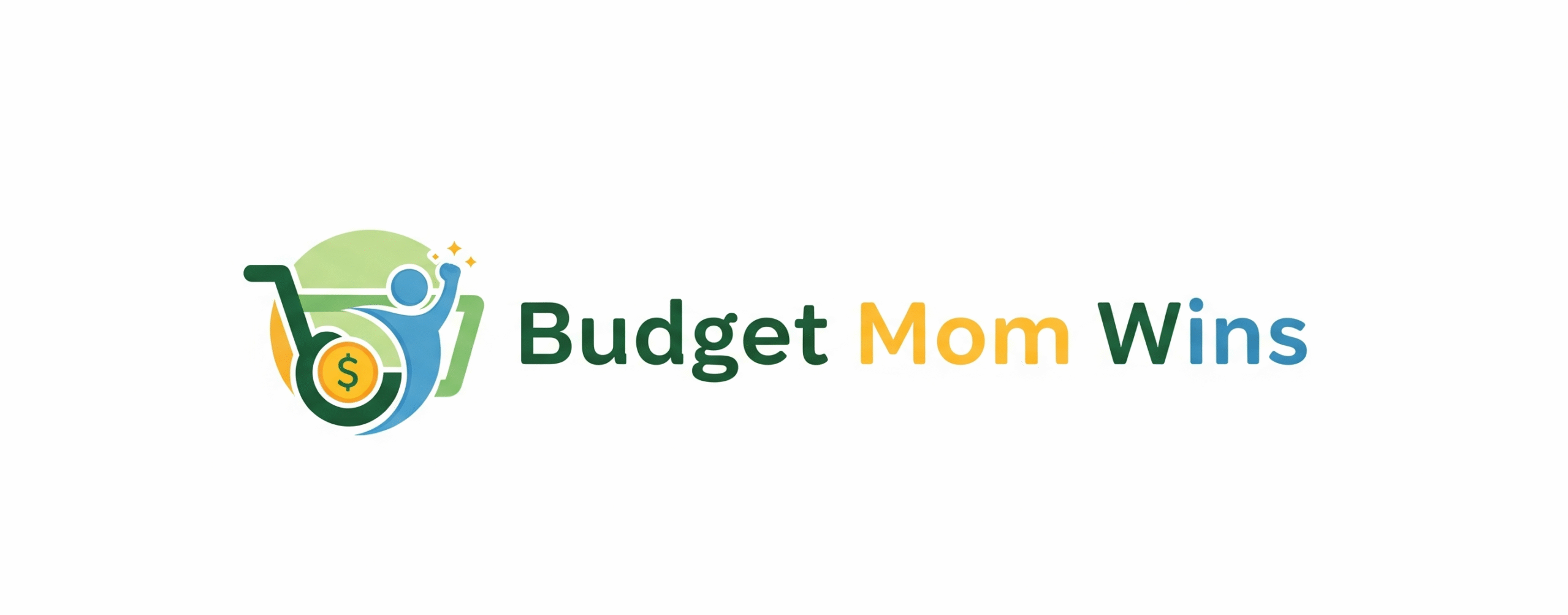Budget Living Hacks for Millennial Parents Crushing Student Loan Debt in 2025 opens the door to practical and innovative strategies designed to help families navigate the challenging waters of financial responsibility while juggling student loan payments. In today’s economy, millennial parents are faced with unique hurdles, making it essential to find ways to stretch their budgets without compromising their family’s quality of life.
By leveraging effective budgeting techniques, creative savings strategies, and smart shopping tips, parents can secure a stable and affordable living environment while imparting crucial financial lessons to their children.
From understanding the nuances of essential versus non-essential expenses to tapping into community resources, this guide aims to equip millennial parents with the knowledge and tools they need to thrive financially in 2025. With the right mindset and approach, achieving budget-friendly living is certainly within reach.
Budgeting Basics for Millennial Parents: Budget Living Hacks For Millennial Parents Crushing Student Loan Debt In 2025
Effective budgeting is essential for millennial parents, particularly those striving to manage both family expenses and student loan debt. Understanding your financial landscape can empower you to make informed decisions, optimize spending, and ultimately pave the way toward financial freedom. This guide Artikels practical budgeting techniques tailored for families, provides insights on essential versus non-essential expenses, and presents a monthly budgeting template specifically designed for households with children.
Effective Budgeting Techniques for Families
Creating a budget that aligns with family needs can significantly reduce financial stress. Here are some effective budgeting techniques:
1. Track Your Income and Expenses
Begin by noting all sources of income and categorizing expenses. This helps reveal spending patterns and identifies areas for potential savings.
Managing a budget can be challenging, especially when raising a family on a single income. I discovered effective strategies to reduce my expenses significantly, as detailed in my journey on how I slashed my grocery bill in half for a family of four. For more insights, check out How I Slashed My Grocery Bill in Half for Family of 4 on Single Income (Shocking Results).
2. Set Financial Goals
Establish short-term and long-term goals, such as saving for a family vacation or paying off student loans. Having clear objectives can motivate your budgeting efforts.
3. Use the 50/30/20 Rule
Allocate 50% of your income to needs, 30% to wants, and 20% to savings and debt repayment. This model provides a straightforward framework for managing finances.
Many stay-at-home moms are looking for flexible side hustles to contribute financially. I’ve compiled a list of options that don’t require childcare and can help you earn over $500. If this sounds appealing, discover the opportunities in my article on the 10 Best Side Hustles for Stay at Home Moms 2025 No Childcare Needed (Earn $500+).
4. Utilize Budgeting Apps
If you’re passionate about photography, the Oppo Reno 6 5G camera phone might be the perfect tool for you. This device has been tested by experts for its AI Beauty Portrait Mode, ensuring stunning results. To explore its capabilities further, visit Buy Oppo Reno 6 5G Camera Phone Photography Expert Tested AI Beauty Portrait Mode.
Leverage technology by using budgeting apps that can help you track expenses, set up reminders for bills, and visualize your financial goals.
Essential vs. Non-Essential Expenses
Understanding the difference between essential and non-essential expenses is crucial for effective budgeting. Here is a breakdown of these categories: Essential Expenses:
- Housing (rent/mortgage)
- Utilities (electricity, water, gas)
- Groceries
- Childcare or education costs
- Insurance (health, auto, home)
- Minimum loan payments
Non-Essential Expenses:
- Dining out
- Entertainment (movies, concerts)
- Subscriptions (streaming services, magazines)
- Luxury items (designer clothes, gadgets)
- Non-essential travel
Categorizing expenses helps parents prioritize spending and identify areas to cut back, ensuring that essential needs are met first.
Monthly Budgeting Template for Households with Children
Having a structured monthly budgeting template is invaluable for managing family finances. Below is a simple template that parents can adapt:
| Income | Amount |
|---|---|
| Salary (after tax) | __________ |
| Other Income | __________ |
| Total Income | __________ |
| Expenses | Amount |
|---|---|
| Housing | __________ |
| Utilities | __________ |
| Groceries | __________ |
| Childcare/Education | __________ |
| Insurance | __________ |
| Minimum Loan Payments | __________ |
| Non-Essential Expenses | __________ |
| Total Expenses | __________ |
By subtracting total expenses from total income, parents can identify their monthly savings or deficits, facilitating smarter financial planning.
Implementing these budgeting strategies can profoundly enhance the financial stability of millennial parents, allowing them to focus on their children’s needs while managing student loan obligations effectively.
Creative Savings Strategies
Finding innovative ways to save money is crucial for millennial parents dealing with student loan debt. By employing unique strategies for managing grocery spending, utilities, and utilizing community resources, families can significantly lighten their financial load. This section explores various creative avenues to bolster savings while maintaining a comfortable lifestyle.
Money-Saving Techniques for Groceries and Household Supplies
Grocery shopping can be a significant expense, but several creative methods can reduce costs without sacrificing quality. Utilizing local resources, meal planning, and bulk buying are effective ways to save.
- Meal Planning: Plan meals for the week to avoid impulse purchases. Use grocery lists based on your meal plan to stick to essentials.
- Local Farmers’ Markets: Visiting farmers’ markets can yield fresh produce at lower prices than supermarkets, and often, the quality is superior.
- Couponing and Cashback Apps: Use apps like Ibotta and Rakuten to earn cashback on grocery purchases while stacking savings with coupons.
- Bulk Buying: Purchase non-perishable items in bulk to take advantage of lower prices, ensuring you only buy what you need to avoid waste.
- Community Food Programs: Explore local food banks or community-supported agriculture (CSA) programs that offer fresh produce at reduced costs.
Reducing Utility Bills and Enhancing Energy Efficiency
High utility bills can put a strain on family budgets. Implementing energy-efficient practices not only reduces costs but also contributes to a more sustainable lifestyle.
- Energy-Efficient Appliances: Invest in ENERGY STAR-rated appliances that consume less electricity, leading to significant long-term savings.
- Smart Thermostats: Installing a smart thermostat helps manage heating and cooling more effectively, optimizing energy use based on your family’s schedule.
- Seal and Insulate: Sealing gaps around windows and doors and adding insulation can minimize heating and cooling costs, making your home more energy-efficient.
- LED Lighting: Switching to LED bulbs consumes up to 75% less energy than incandescent bulbs, lasting much longer and reducing electricity bills.
- Water-Saving Fixtures: Installing low-flow showerheads and faucet aerators reduces water usage and lowers the associated utility costs.
Community Resources and Financial Assistance Programs
Many communities offer resources to help families manage financial challenges. These programs can provide valuable support, especially for those dealing with student loan debt.
- Government Assistance Programs: Investigate local or state programs that provide financial assistance for utilities, housing, or food through agencies like the Low-Income Home Energy Assistance Program (LIHEAP).
- Non-Profit Organizations: Organizations such as United Way and local charities often have programs to assist families in need, offering everything from food pantries to rental assistance.
- Local Credit Unions: Many credit unions offer financial literacy programs and low-interest loans that can help ease the burden of debt repayment.
- Educational Workshops: Attend workshops on budgeting and savings strategies provided by community centers or libraries which can offer practical advice and resources.
- Free Tax Prep Services: Utilize free tax preparation services offered by organizations like Volunteer Income Tax Assistance (VITA) to maximize tax returns and access potential credits.
Affordable Family Activities
Finding enjoyable activities for your family that won’t break the bank can be a challenge, especially for millennial parents dealing with the pressures of student loan debt. However, there are numerous low-cost and free recreational options available that can create lasting memories without straining your finances. By exploring local resources and engaging in home-based entertainment, you can keep your children entertained while staying within budget.Community resources such as parks, libraries, and local events can offer a wealth of opportunities for family fun at little to no cost.
These venues not only provide a change of scenery but also foster social connections and support your children’s development through play and learning. Below are some affordable family activities that can be enjoyed without turning to costly entertainment options.
Low-Cost and Free Recreational Activities
The following list Artikels some fantastic options for family outings that are easy on the wallet. Engaging in these activities can enhance family bonds while keeping expenses low.
- Visit Local Parks: Parks often feature playgrounds, picnic areas, and walking trails. Spending a day outdoors can be both refreshing and invigorating.
- Community Events: Many towns host free events such as concerts, festivals, and movie nights. Check local community boards or websites for upcoming activities.
- Nature Walks and Hikes: Explore nearby trails or nature reserves. These adventures can instill a love for nature in kids while promoting physical activity.
- Visit Museums on Free Days: Some museums offer free admission on specific days each month, allowing families to enjoy educational experiences without the typical ticket price.
- Attend Farmer’s Markets: Visiting a local farmer’s market can be a fun outing for the family. Kids can enjoy sampling fresh produce, and you can teach them about healthy eating.
Home-Based Entertainment Ideas
Creating engaging entertainment options at home can also keep your children entertained for hours without costing a fortune. Here are some simple yet effective ideas to consider:
- DIY Craft Projects: Utilize household items for crafting. Projects like making homemade greeting cards or decorations can unleash creativity.
- Family Game Night: Dust off those board games or card games. A night dedicated to friendly competition can foster bonding and laughter.
- Home Movie Theater: Create a movie night experience with popcorn and homemade snacks. Choose a theme or series to make it special.
- Backyard Camping: Pitch a tent in your backyard for a camping experience at home. This can excite children and create a fun adventure.
- Storytime Sessions: Set aside time for reading together. Visit your local library to borrow books or participate in storytime programs.
Benefits of Local Parks, Libraries, and Community Events
Utilizing local resources can significantly enhance your family’s recreational experience while adhering to a budget. These venues contribute positively to your children’s development and provide enriching experiences.
- Parks: Parks are great for physical exercise and social interaction. They often have free resources such as sports facilities and playgrounds.
- Libraries: Libraries offer free access to books, educational programs, and workshops. They are excellent for fostering a love of reading and learning.
- Community Events: Participation in local events encourages community engagement and helps children develop social skills while having fun.
“Engaging in affordable activities can create cherished family memories while alleviating financial stress.”
Smart Shopping Tips
Millennial parents often find themselves walking a tightrope between managing household expenses and ensuring their families have what they need. Smart shopping can alleviate some of the financial stress and make a significant impact on monthly budgets. Implementing effective strategies for saving on everyday purchases, buying second-hand, and aligning shopping habits with sales cycles can empower parents to stretch their dollars further.
Making the transition to being a stay-at-home mom requires careful financial preparation. I documented my experience and shared critical steps in my guide, which can help others considering this path. For more details, check out How I Quit My Job to Become Stay at Home Mom Financial Preparation Guide.
Effective Use of Discount and Coupon Apps
Utilizing discount and coupon apps can be a game-changer in managing everyday expenses. These applications offer a plethora of deals that can result in substantial savings over time.
- Popular apps like Honey, Rakuten, and Ibotta automatically apply the best coupons at checkout, ensuring you never miss a discount.
- Retailer-specific apps often provide exclusive deals and loyalty rewards. For example, Target Circle and Walmart Savings Catcher are designed to help shoppers save on groceries and household items.
- Seasonal promotions are frequently featured in these apps, allowing users to plan purchases around major sales events such as Black Friday or Back to School sales.
“Using coupon apps can save an average of 20-30% on regular shopping trips, which can add up significantly over time.”
Buying Second-Hand and Swapping Goods
Exploring second-hand options and participating in local swapping communities can yield enormous benefits. This approach not only saves money but also promotes sustainability.
- Thrift stores and online marketplaces like Facebook Marketplace or OfferUp often feature gently used clothing, toys, and home goods at a fraction of their original cost.
- Community groups on social media platforms facilitate item swaps, where parents can exchange children’s clothing, toys, or household items directly with one another.
- Hosting or participating in garage sales can be a fun way to declutter while finding unique bargains. It also serves as a great opportunity for community bonding.
Designing a Shopping Plan Aligned with Sales Cycles, Budget Living Hacks for Millennial Parents Crushing Student Loan Debt in 2025
Understanding sales cycles can dramatically reduce costs on necessary items. Planning purchases according to these cycles ensures you’re buying when prices are at their lowest.
- Clothing retailers often have sales at the end of seasons. For example, winter clothing goes on clearance in late February, while spring items are discounted in late August.
- Toys typically see major discounts after the holiday season, making January a perfect time for parents to stock up for birthdays or upcoming holidays.
- Household goods, such as kitchen appliances, often go on sale during major shopping events like Memorial Day and Labor Day, offering significant savings.
“Strategically planning your shopping around these sales cycles can lead to savings of up to 50% or more on essential items.”
Managing Student Loan Debt
Managing student loan debt is a critical concern for millennial parents who are striving to balance their financial responsibilities. With the burden of debt often impacting their ability to save for the future, understanding the options available for managing these loans can provide significant relief. Utilizing income-driven repayment plans and exploring consolidation or refinancing strategies are essential steps that can lead to lower monthly payments and reduced overall interest costs.
Income-Driven Repayment Plans
Income-driven repayment plans (IDR) are tailored for borrowers whose financial circumstances make standard repayment options challenging. These plans adjust monthly payments based on income and family size, making it easier for parents to manage their budgets while repaying their student loans. The key features of IDR plans include:
- Adjusted Payments: Monthly payments are capped at a percentage of discretionary income, which can significantly lower the financial strain on families.
- Loan Forgiveness: After 20 to 25 years of qualifying payments, any remaining loan balance may be forgiven, providing a long-term solution for those still struggling with debt.
- Eligibility: Most federal loans qualify for IDR plans, but it’s essential for parents to apply and verify their eligibility to take advantage of these benefits.
“Income-driven repayment plans can transform how families approach their student debt, aligning payments with their financial capabilities.”
Consolidation and Refinancing Strategies
Consolidating or refinancing student loans can be an effective way to manage debt and lower interest rates. By consolidating multiple loans into a single one, parents simplify their repayment process and may qualify for lower interest rates.Strategies to consider include:
- Federal Loan Consolidation: This option allows borrowers to combine their federal loans into a Direct Consolidation Loan, which may offer benefits like extended repayment terms and access to additional repayment plans.
- Refinancing Private Loans: Families can seek refinancing through private lenders to secure more favorable interest rates, especially if their credit scores have improved since they took out their original loans.
- Comparing Lenders: It’s crucial to compare different lenders and their offers when considering refinancing, as rates and terms can vary significantly.
“Through strategic consolidation and refinancing, parents can regain control over their student loan payments, potentially leading to substantial savings.”
Resources for Financial Counseling
For families looking to navigate the complexities of student loan debt, accessing financial counseling and workshops can provide valuable insights and strategies. Many nonprofit organizations offer free or low-cost services to help borrowers understand their options.Key resources include:
- Navigating the Federal Student Aid Website: This government resource provides comprehensive information on repayment plans, forgiveness programs, and counseling services.
- Local Community Workshops: Many community centers and libraries host financial literacy workshops focusing on debt management, providing families with tools to manage their finances more effectively.
- Consulting Nonprofit Organizations: Organizations like the National Foundation for Credit Counseling (NFCC) offer personalized debt management plans and educational resources.
“Utilizing financial counseling resources can empower families to make informed decisions about their student loan repayments, ultimately leading to better financial health.”
Financial Education for Kids
Teaching children about budgeting and money management is essential for fostering a sense of financial responsibility and independence. In today’s fast-paced world, instilling these skills at a young age prepares them for future financial decisions and helps them navigate economic challenges. By integrating financial education into their daily lives, parents can empower their children to make informed choices that can lead to long-term financial stability.Engaging children in fun and interactive ways is vital to keep their interest while learning about finances.
Hands-on activities and games can effectively introduce concepts like saving, spending, and investing. This approach not only makes learning enjoyable but also reinforces the skills needed to manage money wisely.
Activities and Games to Foster Financial Literacy
Incorporating financial literacy into playtime can significantly enhance children’s understanding of money management. Here are some effective activities and games designed to teach essential financial concepts:
- Allowance Management: Use a weekly allowance to help children learn how to budget their money. Encourage them to allocate a portion for savings, spending, and giving. This practical experience fosters responsibility and understanding of budgeting.
- Board Games: Games like ‘Monopoly’ or ‘The Game of Life’ can teach children about property investment, managing money, and the consequences of financial decisions in a fun way. These games simulate real-life financial scenarios and decisions.
- Save to Spend Jars: Introduce a jar system where children can separate their money into categories: spending, saving, and sharing. This visual representation helps them understand the importance of allocating funds for different purposes.
- Financial Literacy Apps: Explore apps designed for kids that turn learning about money into a game. Some popular choices include ‘PiggyBot’ for managing allowances and ‘Bankaroo’ for tracking expenses and savings.
- Online Simulations: Websites like ‘Khan Academy’ offer interactive lessons on economics and personal finance tailored to children. These platforms provide engaging ways for kids to learn through videos and quizzes.
Online Resources and Apps for Financial Education
Numerous online resources and applications can supplement children’s financial education, offering interactive and engaging content. These tools help children understand the principles of saving, spending, and investing.
- Kids’ Money: This educational website offers games, articles, and activities specifically designed for children to learn financial basics. It covers topics from budgeting to banking in a kid-friendly manner.
- Greenlight: This app allows kids to manage their own debit cards with parental oversight. It teaches them about the value of money, spending wisely, and saving for goals.
- Smart About Money: This platform provides free courses on financial literacy that can engage teens and pre-teens, helping them prepare for real-world financial scenarios.
- MoneySense for Kids: A Canadian initiative that offers resources and tools for children to learn about money management in a playful and engaging format.
Incorporating these activities and resources into everyday life can significantly enhance children’s understanding of money management. By making financial education a priority, parents can equip their children with the skills necessary to thrive financially in the future.
As a single parent, budgeting is crucial. I created an ultimate meal plan that helps families with three kids eat well for under $80 per week. This plan is not only economical but also practical, and you can learn all about it in my detailed guide on the Ultimate Budget Meal Plan for Single Parents With 3 Kids Under $80 per Week.
Leveraging Technology for Budgeting
In an increasingly digital world, leveraging technology for budgeting has become essential, especially for millennial parents managing tight finances and student loan debt. By utilizing various budgeting apps and software designed specifically for family needs, parents can gain better insights into their spending habits, track expenses, and ultimately save more. This section will delve into the tools available for financial management and provide strategies to maximize their use.
Budgeting Apps and Software for Families
The right budgeting tools can simplify financial management and help families stay on track with their financial goals. Here are some popular budgeting apps and software specifically designed for families:
- YNAB (You Need A Budget): This app focuses on giving every dollar a job, encouraging proactive budgeting. It offers features like goal tracking and the ability to sync with bank accounts for real-time updates.
- Mint: Mint is well-known for its expense tracking capabilities. It allows users to link all bank accounts, credit cards, and loans, providing a holistic view of finances along with alerts for bill payments.
- EveryDollar: Created by financial expert Dave Ramsey, EveryDollar simplifies budgeting by using a zero-based budgeting approach. It helps families allocate their income directly towards expenses and savings.
- GoodBudget: This app uses the envelope budgeting method, allowing families to allocate a set amount of money for various categories. It’s useful for families wanting to stick to their budgets without feeling overwhelmed.
Each of these tools offers unique benefits that cater to different budgeting styles and family needs. Selecting the right one involves considering how each app aligns with your financial habits and goals.
Comparison of Financial Tools for Tracking Expenses and Savings
When evaluating financial tools, it’s beneficial to compare their features, usability, and cost-effectiveness. Below is a comparison table highlighting key aspects of several budgeting tools:
| App/Software | Cost | Key Features | User-Friendly |
|---|---|---|---|
| YNAB | $11.99/month | Goal tracking, real-time syncing, financial education | High |
| Mint | Free | Expense tracking, alerts, credit score monitoring | Very High |
| EveryDollar | Free/$99/year for premium | Simple budgeting, zero-based budgeting | High |
| GoodBudget | Free/$7/month for premium | Envelope budgeting, expense tracking | Moderate |
This comparison helps families identify which budgeting tool might best fit their lifestyle and financial needs, ensuring they make an informed decision.
Setting Up Reminders and Alerts for Bill Payments
To avoid late fees and manage finances effectively, setting up reminders and alerts is crucial. Many budgeting apps come equipped with this feature, but it can also be done independently through digital calendars or task management apps. Implementing these reminders helps ensure that bills are paid on-time, leading to better budgeting practices and less financial stress. Here are some tips for optimizing reminders:
- Set recurring reminders for all bill payments, ideally one week in advance.
- Use color-coded calendars to differentiate between different types of bills (e.g., utilities, credit cards, loan payments).
- Opt for notifications through both email and app alerts to ensure no reminder is missed.
- Regularly review upcoming bills to adjust the budget as needed and avoid surprises.
By integrating these tips into your budgeting strategy, you can mitigate the risk of late payments and enhance your overall financial management.
Last Word
In conclusion, embracing Budget Living Hacks for Millennial Parents Crushing Student Loan Debt in 2025 not only alleviates financial stress but also empowers families to create lasting memories without breaking the bank. By adopting smart budgeting practices, finding creative ways to save, and educating children about money management, millennial parents can pave the way for a financially secure future. The journey may be challenging, but with these strategies, it’s possible to transform student loan debt from a burden into a manageable aspect of family life.
Common Queries
What are the best budgeting tools for millennial parents?
Some popular budgeting tools include Mint, You Need a Budget (YNAB), and EveryDollar, which help track expenses and set financial goals.
How can I save on groceries?
Consider meal planning, using coupons, buying in bulk, and utilizing apps that offer cashback on grocery purchases.
Are there community resources available for financial assistance?
Yes, many communities offer programs through local nonprofits, churches, or government initiatives that provide financial assistance or resources for families in need.
What activities can I do with my kids on a budget?
Explore free local events, utilize libraries for books and activities, or engage in home-based arts and crafts to keep kids entertained without spending money.
How can I teach my kids about money management?
Incorporate fun games that simulate financial decisions, provide an allowance to manage, and use educational apps to teach them about saving and spending.








Leave a Comment